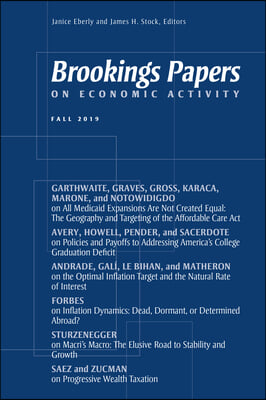Corporate Debt Overhang and Credit Policy
IF 2.8
3区 经济学
Q1 ECONOMICS
引用次数: 51
Abstract
ABSTRACT:Many business sectors and households face an unprecedented loss of income in the current COVID-19 recession, triggering financial distress, separations, and bankruptcy. Rather than stimulating demand, government policy's main aim should be to provide insurance to firms and workers to avoid undue scarring that will hamper a recovery once the pandemic is past. We develop a corporate finance framework to guide interventions in credit markets to avoid such scarring. We emphasize three main results. First, policy should inject liquidity into small and medium-sized firms that are liquidity constrained and for which social costs of bankruptcy are high. Second, large firms for whom solvency is the dominant issue require a more nuanced approach. Debt overhang creates a distortion, leading these firms to fire workers, forgo expenditures that maintain enterprise value, and delay filing for a Chapter 11 bankruptcy longer than is socially efficient. Government resources toward reducing the legal and financial costs of bankruptcy are unambiguously beneficial. Policies that reduce funding costs are only socially desirable if the pandemic is expected to be short-lived and if bankruptcy costs are high. Last, transfers necessary to avoid bankruptcy allow borrowers to continue paying their mortgages or credit card bills and ultimately benefit owners of assets such as real estate or credit card receivables. Taxes to fund transfers should be raised from these asset owners.企业债务积压与信贷政策
摘要:在当前新冠肺炎疫情引发的经济衰退中,许多企业和家庭面临前所未有的收入损失,引发财务困境、离职和破产。政府政策的主要目标应该是为企业和工人提供保险,而不是刺激需求,以避免在疫情过去后阻碍复苏的不必要的伤疤。我们开发了一个企业融资框架,以指导信贷市场的干预,以避免这种疤痕。我们强调三个主要结果。首先,政策应向流动性受限、破产社会成本高的中小企业注入流动性。其次,偿付能力是主要问题的大公司需要更细致的方法。债务积压造成了一种扭曲,导致这些公司解雇工人,放弃维持企业价值的支出,推迟申请破产保护的时间超过了社会效率。政府用于减少破产的法律和财务成本的资源无疑是有益的。只有在预计大流行是短暂的,并且破产成本很高的情况下,降低融资成本的政策才会受到社会的欢迎。最后,避免破产所需的转移允许借款人继续支付抵押贷款或信用卡账单,并最终使房地产或信用卡应收账款等资产的所有者受益。应该向这些资产所有者征收资金转移税。
本文章由计算机程序翻译,如有差异,请以英文原文为准。
求助全文
约1分钟内获得全文
求助全文
来源期刊

Brookings Papers on Economic Activity
ECONOMICS-
CiteScore
10.10
自引率
0.00%
发文量
12
期刊介绍:
The Brookings Papers on Economic Activity (BPEA) is a semi-annual academic conference and journal that pairs rigorous research with real-time policy analysis to address the most urgent economic challenges of the day. Working drafts of the papers are presented and discussed at conferences typically held twice each year, and the final versions of the papers and comments along with summaries of the general discussions are published in the journal several months later. The views expressed by the authors, discussants and conference participants in BPEA are strictly those of the authors, discussants and conference participants, and not of the Brookings Institution. As an independent think tank, the Brookings Institution does not take institutional positions on any issue.
 求助内容:
求助内容: 应助结果提醒方式:
应助结果提醒方式:


